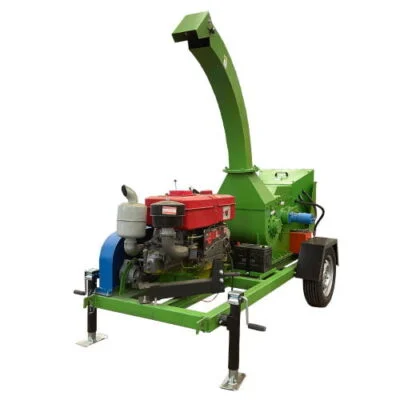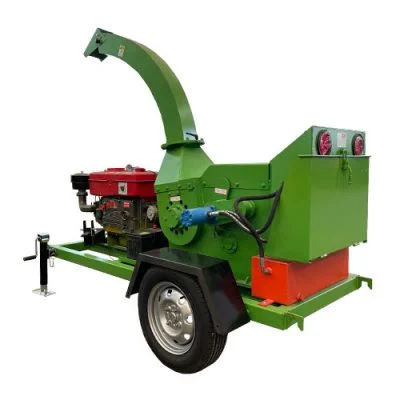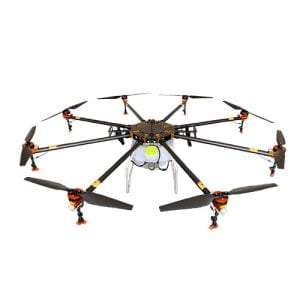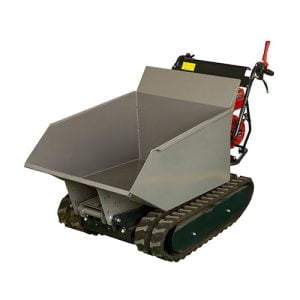How Industrial Wood Chippers Are Revolutionizing the Logging Industry
Introduction

In recent decades, the logging industry has experienced a profound evolution driven by technological advancements, notably the introduction and refinement of industrial wood chippers. These powerful machines have redefined how timber is processed, offering unparalleled efficiency, sustainability, and versatility. This blog delves into the transformative impact of industrial wood chippers on the logging sector, examining their operational intricacies, environmental implications, and future prospects.
Understanding Industrial Wood Chippers
What is an Industrial Wood Chipper?
An industrial wood chipper is a robust machine specifically designed to process large volumes of timber quickly and efficiently. It achieves this by employing powerful blades or drums that shred logs, branches, and other wood materials into smaller, uniform wood chips or sawdust. The size and design of these machines vary depending on the scale and specific requirements of the logging operation.
Types of Industrial Wood Chippers
There are several types of industrial wood chippers tailored to different applications:
- Drum Chippers: Utilize a rotating drum with blades to process wood.
- Disc Chippers: Feature a spinning disc with knives that slice through wood.
- Towable Chippers: Designed for mobility, these chippers can be transported to various sites for on-demand processing.
Each type offers distinct advantages in terms of throughput capacity, efficiency, and suitability for different wood types and operational environments.
Operational Advantages
Efficiency in Timber Processing
Industrial wood chippers significantly enhance efficiency in timber processing operations. By converting raw logs and branches into uniform wood chips or sawdust, these machines streamline the production process. This efficiency not only reduces labor costs but also increases overall productivity, allowing logging companies to handle larger volumes of wood in shorter time frames.
Versatility in Applications
The versatility of industrial wood chippers extends beyond basic wood processing. These machines are integral in various industries such as:
- Pulp and Paper Manufacturing: Wood chips are a primary raw material for paper production.
- Bioenergy Production: Wood chips serve as feedstock for biomass power plants and biofuel production.
- Landscaping and Agriculture: Used for mulching, soil improvement, and composting.
Their ability to process different wood types and sizes makes them indispensable across multiple sectors, contributing to resource efficiency and sustainability.
Environmental Impact
Sustainability Practices
Industrial wood chippers play a crucial role in promoting sustainable forestry practices. By efficiently processing wood residues and by-products, these machines minimize waste and maximize resource utilization. Wood chips generated from chipping operations are utilized in various eco-friendly applications, reducing the reliance on non-renewable resources.
Carbon Footprint Reduction
The adoption of industrial wood chippers also contributes to reducing the carbon footprint associated with traditional logging methods. By converting wood waste into valuable products like wood chips for bioenergy, these machines help mitigate greenhouse gas emissions and promote a circular economy approach in the forestry sector.
Comparison of Industrial Wood Chipper Types
| Feature | Drum Chipper | Disc Chipper | Towable Chipper |
|---|---|---|---|
| Size Range | Medium to Large | Large | Small to Medium |
| Output Capacity | High | Very High | Medium |
| Efficiency | Good | Excellent | Moderate |
| Application | Industrial Logging | Large-scale Processing | Landscaping |
| Mobility | Stationary | Stationary or Mobile | Mobile |
Case Studies and Success Stories
Application in Large-Scale Logging Operations
Numerous case studies highlight the transformative impact of industrial wood chippers on large-scale logging operations. For instance, companies employing advanced disc chippers have reported significant improvements in processing efficiency and cost-effectiveness. These machines enable continuous operation with minimal downtime, thereby optimizing overall production output.
Success Stories in Environmental Conservation
In addition to enhancing operational efficiency, industrial wood chippers contribute to environmental conservation efforts. By processing timber residues into reusable wood chips, these machines support reforestation projects and habitat restoration initiatives. The sustainable management of wood resources ensures the preservation of biodiversity and ecosystem integrity in forested areas.
Technical Specifications and Features
Key Components and Functions
Industrial wood chippers incorporate several key components essential for their efficient operation:
- Blades and Drums: Designed to withstand high-stress environments and maintain sharpness for consistent wood processing.
- Feeding Mechanisms: Ensure continuous and uniform feeding of wood materials into the chipper for optimal efficiency.
- Safety Features: Include emergency shut-off switches, safety guards, and automated systems to protect operators from potential hazards.
Understanding these components is crucial for maintaining peak performance and ensuring the safety of personnel involved in wood chipping operations.
Maintenance and Operational Tips
To prolong the lifespan of industrial wood chippers and minimize operational disruptions, regular maintenance is essential. Operators should adhere to manufacturer-recommended maintenance schedules, inspect key components for wear and tear, and promptly address any issues to prevent costly repairs and downtime.
The Future of Industrial Wood Chippers

Technological Advancements
Future advancements in industrial wood chipper technology are poised to enhance operational efficiency and safety further. Innovations such as automated feeding systems, remote monitoring capabilities, and advanced sensor technologies will streamline wood processing operations and improve overall productivity.
Market Outlook and Opportunities
The global market for industrial wood chippers is projected to expand as demand for sustainable wood processing solutions grows. Emerging economies with expanding forestry sectors and increasing investments in renewable energy infrastructure present lucrative opportunities for manufacturers and operators in the wood chipper industry.
Conclusion
Industrial wood chippers represent a cornerstone of innovation in the logging industry, offering a blend of efficiency, versatility, and environmental sustainability. As technology continues to evolve, these machines will play a pivotal role in shaping the future of timber processing worldwide, ensuring responsible resource management and supporting sustainable development goals.
FAQ
Q:What are the primary uses of industrial wood chips?
A:Industrial wood chips are used in various industries, including pulp and paper manufacturing, bioenergy production, composting, and landscaping.
Q:Are industrial wood chippers safe to operate?
A:Yes, industrial wood chippers are equipped with safety features such as emergency shut-off switches, safety guards, and feeding mechanisms designed to minimize risks to operators.
Q:How do industrial wood chippers contribute to environmental sustainability?
A:By converting wood waste into useful products like wood chips for bioenergy, industrial wood chippers reduce landfill waste and promote the use of renewable resources.



